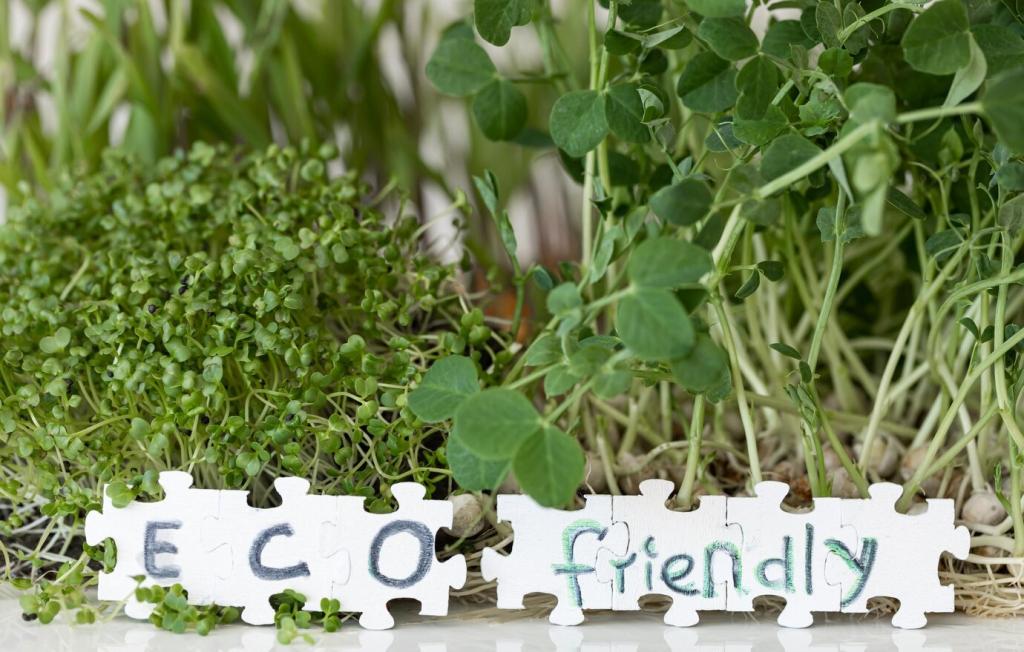Writing Persuasive Content on Eco-Friendly Architecture
Persuasive content surrounding eco-friendly architecture is crucial in motivating audiences to adopt sustainable building practices. This approach fosters awareness about the environmental, economic, and health benefits of green construction, while encouraging tangible action from various stakeholders. Effectively crafted messages can bridge the knowledge gap, subtle biases, or misconceptions about sustainable design. The challenge lies not only in relaying facts, but in engaging emotions and values to inspire change. This page explores key strategies and considerations for creating compelling content that propels eco-conscious architecture into the mainstream conversation.

Understanding the Values of Eco-Friendly Architecture
Eco-friendly architecture emphasizes minimizing negative impacts on the environment, making sustainability the centerpiece of its mission. When writing, it is essential to highlight how sustainable buildings reduce carbon emissions, conserve water, and protect natural resources. Persuasive content should convey the urgency of addressing climate change and resource depletion, connecting these global threats to the architectural choices made today. By drawing parallels between individual actions and environmental outcomes, content can empower readers to view eco-friendly buildings as tangible solutions to pressing ecological problems, instilling a sense of responsibility and possibility.
Sharing Success Stories
Showcasing real-life examples of green buildings in action helps demystify eco-friendly architecture and makes it accessible. Effective content recounts the journey of a project from conception to completion, spotlighting the motivations, challenges, and unexpected rewards. Through interviews with architects, residents, and community members, storytelling brings to life the tangible and intangible benefits of sustainable design. By demonstrating success—not only in environmental metrics but in occupant happiness, productivity, or community pride—writers can create role models and inspire others to follow suit.
The Power of Personal Experience
First-person narratives have an unmatched ability to move readers. Writers can harness this by composing or curating personal accounts of living or working in eco-friendly spaces. Descriptions of improved comfort, reduced allergies, or newfound connections to nature make abstract benefits tangible and emotionally resonant. When readers see themselves reflected in these stories, or recognize the aspirations echoed within, they are far more likely to support or seek out sustainable architecture. These personal stories create empathy and trust, converting skepticism into curiosity, and curiosity into commitment.
Creating Urgency Through Future Visions
Compelling stories do not merely dwell on current achievements—they also paint vivid pictures of what could be. Content that imagines futures made possible by widespread adoption of eco-friendly architecture—healthier cities, thriving ecosystems, resilient communities—creates motivation through hope as well as urgency. By contrasting potential positive outcomes with the consequences of inaction, writers can elicit emotional responses that lend weight to the call for change. This approach helps audiences perceive their participation in sustainability as a powerful and necessary act, spurring them to engagement.
Overcoming Barriers and Misconceptions
Addressing Cost Concerns
A common misconception is that green architecture is prohibitively expensive. Persuasive content must counter this narrative with clear, evidence-based explanations of long-term savings and accessible financing options. Case studies and expert opinions highlighting reduced lifecycle costs can demonstrate that higher initial investments yield substantial returns over time. By empathizing with readers’ financial anxieties and transparently addressing both immediate and deferred costs, content writers can build trust and reassurance, ultimately convincing even budget-conscious audiences of the wisdom of sustainable choices.
Demystifying Technical Complexity
The perceived technical complexity of eco-friendly architecture can inhibit adoption among homeowners, small developers, or those new to the field. Persuasive communication seeks to break down complex ideas into approachable language, using analogies and relatable examples. Explaining common terms—like passive solar design or graywater recycling—removes intimidation and fosters understanding. Additionally, presenting accessible resources, certification programs, or expert guidance encourages participation. By transforming intimidating jargon into digestible content, writers empower audiences to make informed decisions without feeling overwhelmed.
Challenging Aesthetic Stereotypes
Another barrier is the belief that sustainable buildings are unattractive or aesthetically limited. Effective content should celebrate the diverse and innovative designs that eco-friendly architecture enables, from modern urban projects to charming rural retreats. Featuring visually striking examples and the perspectives of visionary architects can broaden perceptions of what is possible. Persuasive narratives can assert that sustainability and beauty are not mutually exclusive, but rather, that green design offers a canvas for creativity. By redefining the aesthetic boundaries of eco-friendly architecture, writers draw in design enthusiasts and skeptics alike.

